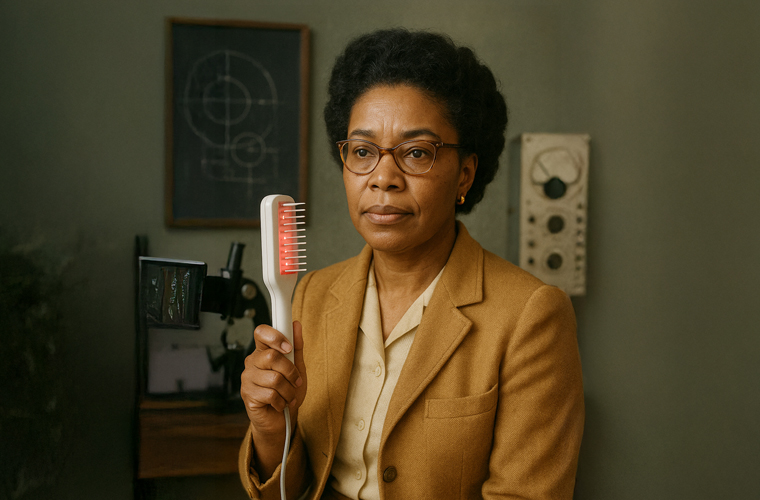The Forgotten Visionary Who Revolutionized Haircare With Light
Lillian Lawrence, a brilliant African American inventor from Chicago, changed the history of beauty technology and phototherapy decades before the mainstream ever acknowledged her contributions. Her pioneering work on the laser comb—a device now hailed as revolutionary in modern hair growth technology—remains an inspiring story of creativity, resilience, and historical erasure.
Roots of Genius
Born in the 1920s in a vibrant black community during the Harlem Renaissance, Lawrence inherited grit and resourcefulness from her seamstress mother and her Pullman porter father. Precision and patience, learned at home, became the cornerstones of her approach to invention. From a young age, Lawrence’s curiosity about hair extended far beyond appearance. Inspired by Madame CJ Walker, she shifted her focus from chemistry to the mechanics of hair tools, often rewiring household devices and experimenting with salon equipment. As she entered adulthood, changing social roles during World War II opened doors for women in technology, allowing her to develop skills in electronics repair and heat transfer.
Inventing Against the Odds
Lawrence’s groundbreaking idea was simple yet radical: use focused light, along with heat and scalp stimulation, to promote hair growth. At a time when the science of lasers was just emerging, she wondered how energy could rejuvenate dormant follicles. Her experiments in the 1940s and 1950s involved scavenged bulbs, makeshift reflectors, and self-built combs, all tested on family and friends with meticulous notes and records. However, the major hurdle for Lawrence was not her lack of creativity but the systemic barriers of race and gender. The patent system of mid-20th-century America was exclusionary, costly, and inaccessible to most Black women. Like many hidden inventors, Lawrence was forced to share her drawings and ideas within her local community rather than protect her innovation on a national stage.
Ahead of Her Time
Decades before the first patent for a laser hair growth device appeared in 1986, Lawrence had already outlined the principles that now underpin the billion-dollar laser comb industry. She experimented with various wavelengths to stimulate scalp cells, demonstrating an advanced understanding of photobiology for her era. Her homemade devices—comb handles lined with tiny bulbs, powered by rudimentary battery packs—anticipated both the engineering and therapeutic mechanisms now verified by clinical research.
Lawrence’s notes detailed the blending of beauty, physics, and self-care—a scientific and spiritual reclaiming of Black identity in a sector long dominated by Eurocentric standards. Her work elevated haircare to an act of resistance and pride at a time when black hair was highly politicized.
Lost and Found
Lillian Lawrence died in 1978, largely unknown outside her immediate neighborhood and a small circle of beauty school teachers. Her notebooks and prototypes, stored and mislabeled for years, were only rediscovered in the archives of Chicago’s DuSable Museum decades later. Scholars found her detailed diagrams of light-emitting combs, notes on photostimulation, and empirical scalp test results, revealing an extraordinary intellect lost to poverty, racism, and gender exclusion. Today, Lawrence’s achievements are gaining recognition in black history museum exhibits and academic conferences. Her legacy, once shadowed by neglect, now stands as a testament to the ingenuity and persistence of Black women in STEM fields.
Enduring Impact
Modern research confirms the effectiveness of low-level laser therapy for hair growth, echoing the principles Lawrence developed eight decades ago. Her story forces a reevaluation of how innovation is recorded, celebrated, and commercialized—especially when it originates in marginalized communities.
Lillian Lawrence’s vision shaped not just a device, but the social and scientific landscape of beauty technology. Her journey reminds us that genius thrives wherever curiosity overcomes adversity. By illuminating strands of forgotten history, her light continues to shine, inspiring new generations to reclaim, invent, and persevere.

